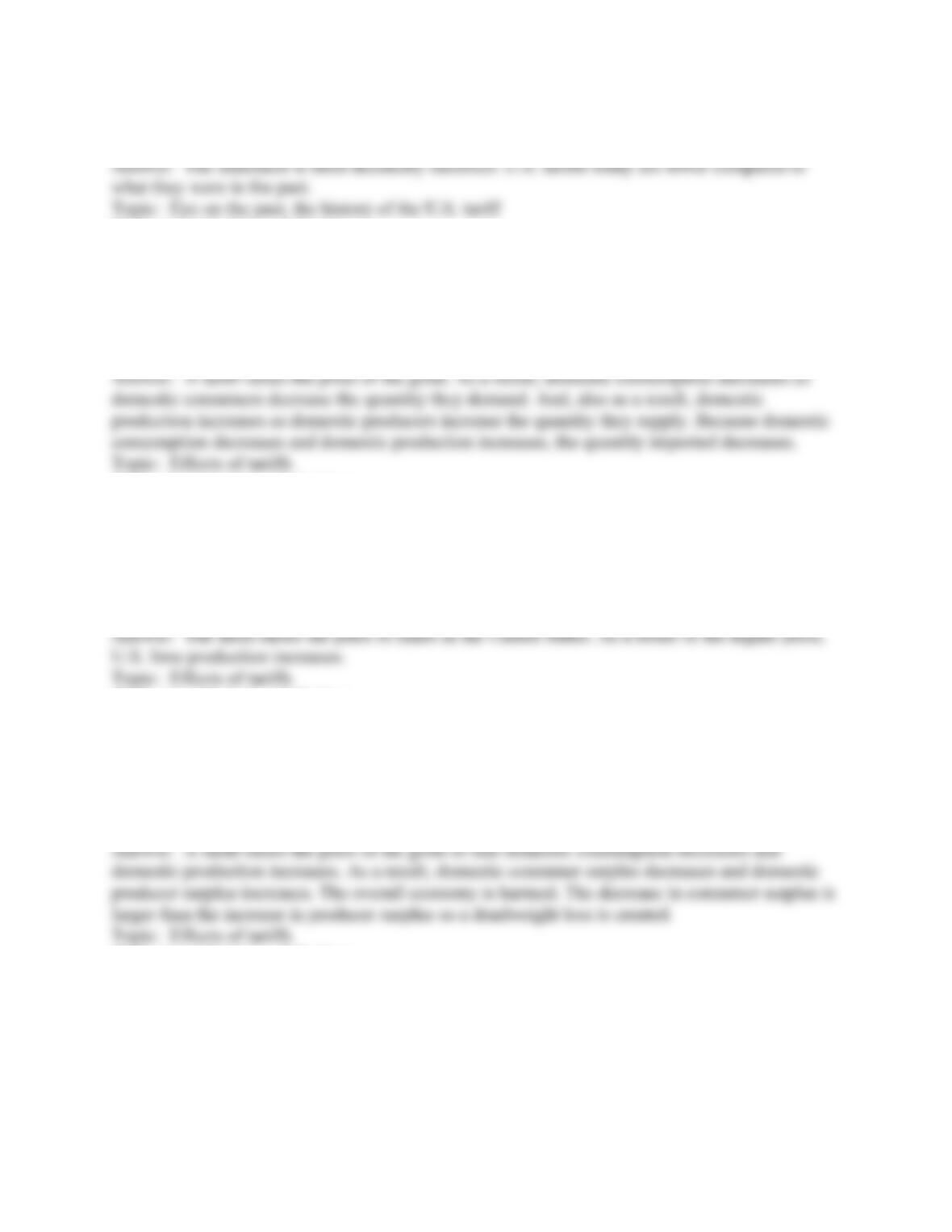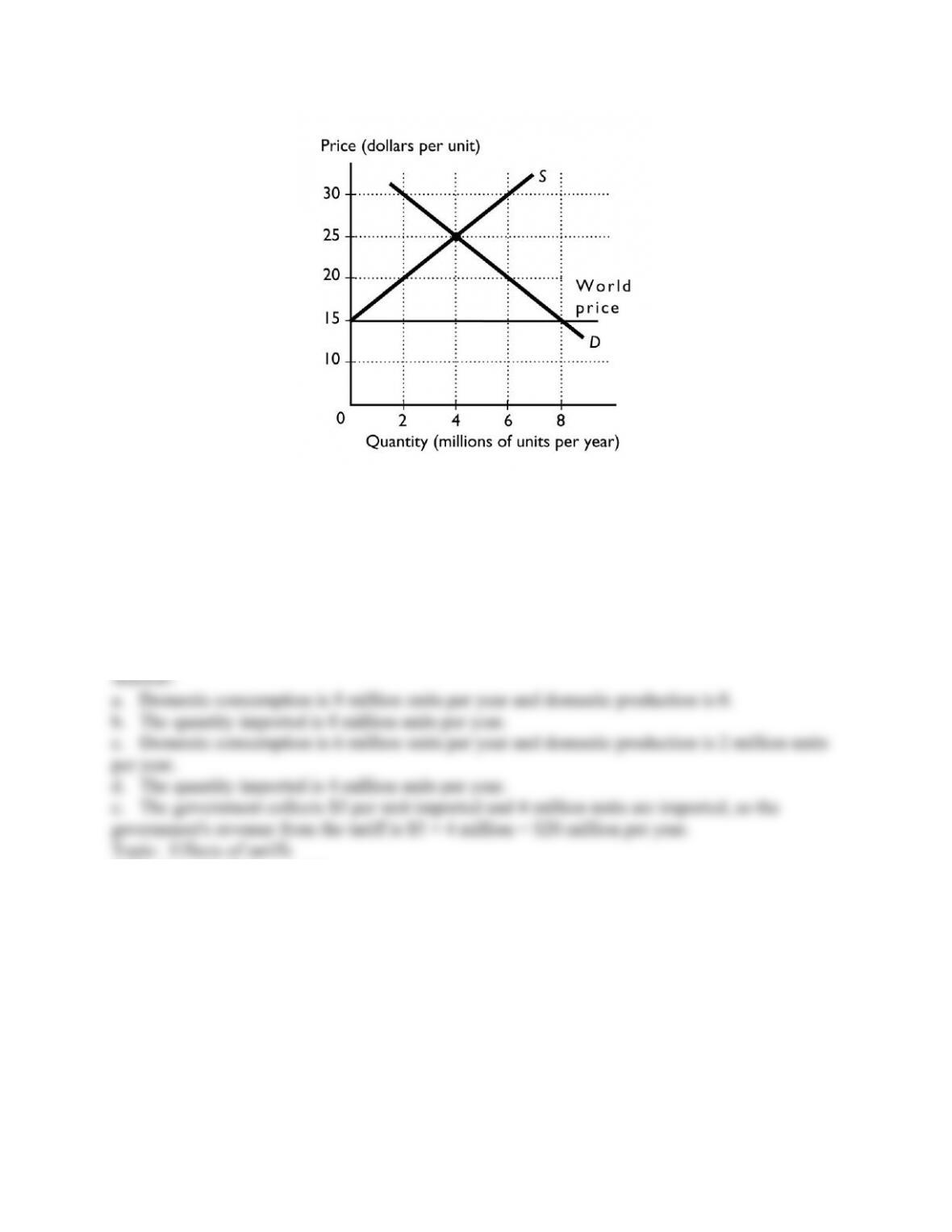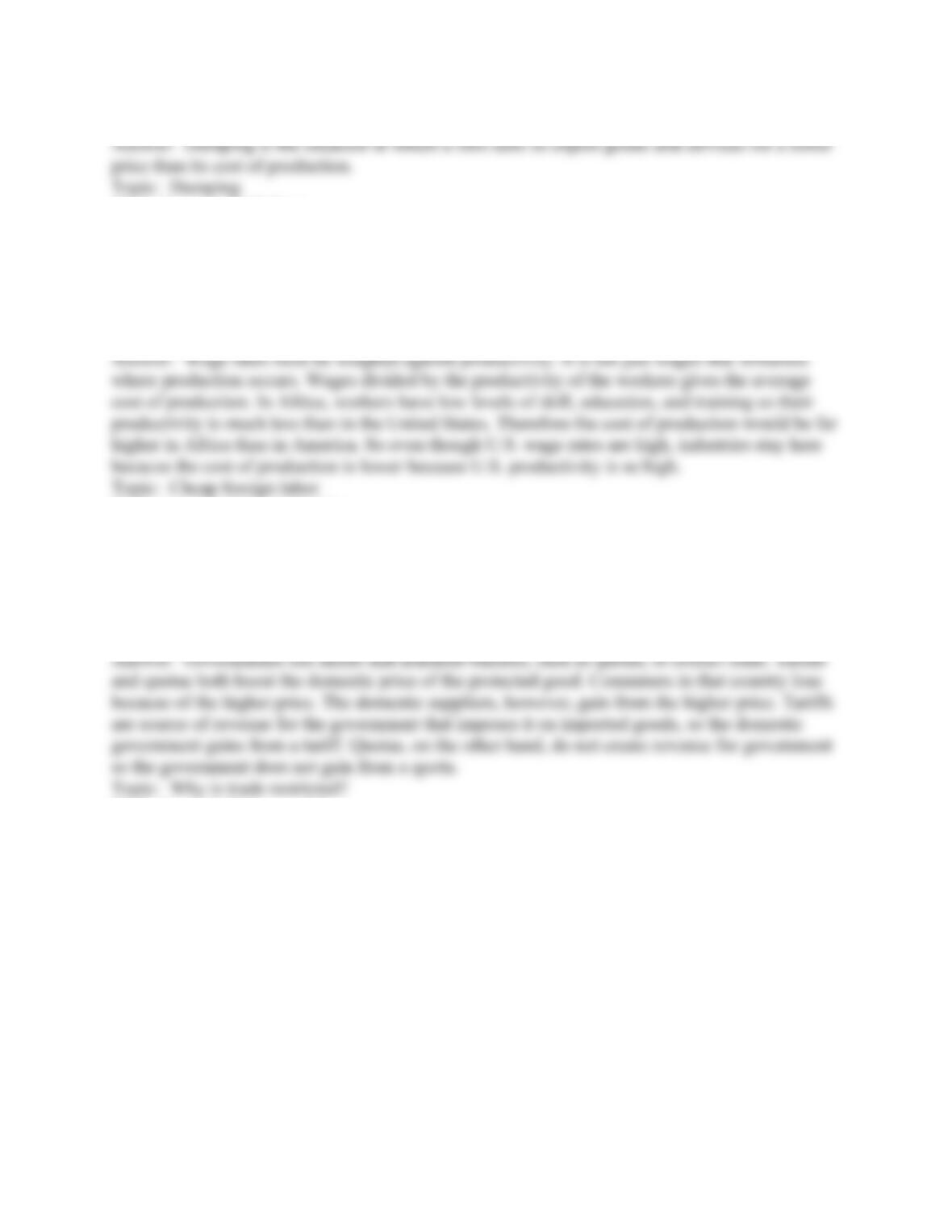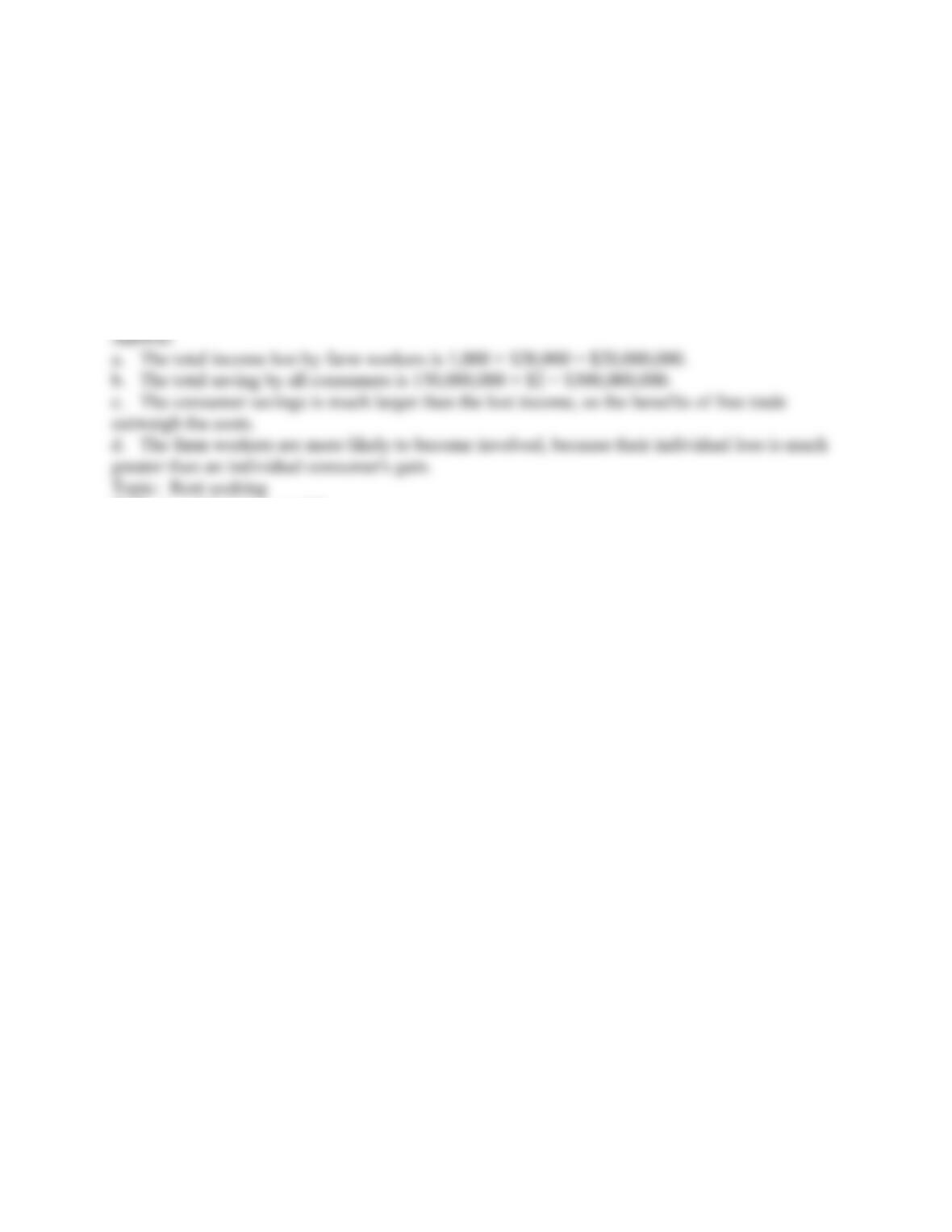
89
Copyright © 2011 Pearson Education, Inc.
5) Merck, an American pharmaceutical company, produces a vaccination that is used against
chicken pox. The table shows the domestic demand for, and supply of, this medication, measured
in thousands of doses per day. The world price of this medicine is $24 per dose.
a. With no trade, what is the U.S. price and quantity of the vaccine?
b. At the world price, how many doses are demanded in the United States?
c. At the world price, how many doses are produced in the United States?
d. At the world price, how many doses are exported?
Skill: Level 3: Using models
Section: Checkpoint 9.1
Author: SB
AACSB: Analytical reasoning
6) The table above has the domestic supply and domestic demand schedules for a product. What
is the equilibrium price with no trade? Over what range of prices will the country export the
good? Over what range will it import the good? Suppose the world price is $20. What is the
quantity demanded, the quantity supplied, and the amount of the good exported or imported?
Skill: Level 3: Using models
Section: Checkpoint 9.1
Author: NAU
AACSB: Analytical reasoning





























